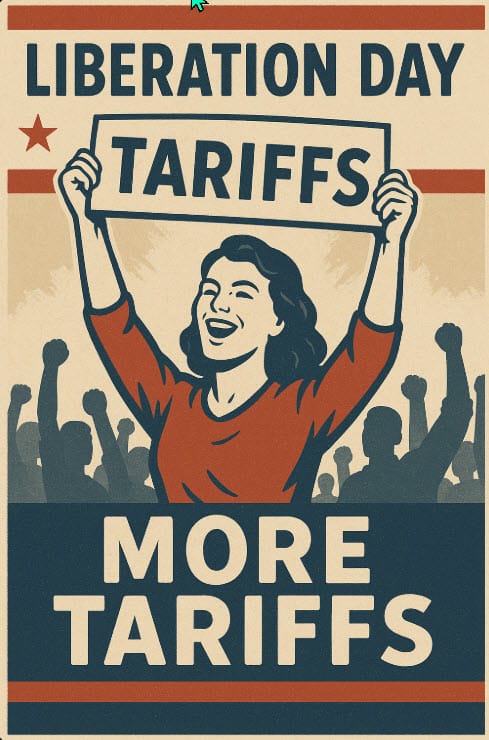Like many consumer stocks, The RealReal $REAL has taken a beating. Shares peaked at $28 and are now changing hands at $3.30. The market cap is now just over $300M. It's less than 1x trailing sales, but they are losing a lot of money. There are also $447M of convertible notes on the balance sheet and $361M in cash, so the enterprise value is a little higher.
For some reason, Berna Barshay over at Empire Financial is touting this as her number one stock pick. The analyst is breathlessly enthusiastic about how The RealReal has built an unassailable franchise in this niche e-commerce category. Let's take a closer look.
The $Real Story
We covered this one at the time of the IPO two years ago. This fashion e-commerce space is one we follow with other names including MyTheresa $MYTE, FarFetch $FTCH, and Revolve Group $RVLV.
The essence of The RealReal story is that there was no "online version" of what luxury consignment shops you find in affluent towns and neighborhoods. Even these have disappeared over the years as rents are easier to pay by businesses that have higher turnover and sales per square foot.
Today there are a number of public companies chasing this market including ThredUP $TDUP, Poshmark $POSH, and FarFetch $FTCH. There are also quite a few well-funded private companies like The Luxury Closet (out of Dubai). FarFetch is more about selling excess inventory of new items but they do have a "Second Life" program for some products like bags. 1stdibs $DIBS is a broader "luxury design" site but also has jewelry and fashion sections. General platforms like eBay $EBAY are also used by some to sell high-value single-SKU items.
There are a few things that The RealReal does that are best-of-breed and unique. These are the positives:
- High touch service - if you are a good prospect/customer they will come to your home and help you get it done. They have also been adding brick and mortar locations in key markets and have 16 now plus 3 consignment offices in the US.
- Better data and price transparency mean that buyers and sellers have a fairly clear estimate of what the fair, market-clearing price for an item is. This reduces friction on both sides of the transaction.
- Rigorous authentication service. Historically this has been mostly human inspection in conjunction with a huge penalty if you try and pass a fake good on their platform.
The recent "sizzle" that the Empire Financial folks are talking about is their use of "AI" and their database to automate more of the process - increasing their throughput and lowering their overhead costs, at least in terms of expert inspectors.
Since they came public management has executed well. They have grown their user base, lowered customer acquisition costs, and continued to demonstrate high levels of customer engagement with buyers becoming consignors and consignors becoming buyers.
There is a new and potentially positive aspect of the current environment which is the supply chain disruptions we are continuing to see. As we witnessed with used car prices, it can make second-hand markets more robust.
The Challenges
At the time of the original IPO, my biggest issue was their high take rate (50%) and high cost operating model. The take rate continues to be a tough thing to reckon with as an investor. Especially when their long-term model is based on some increase in gross margin from current levels.
The rate isn't unjustified given the level of service and they have introduced much more variable pricing where sellers can keep 75%+ for some types of items and/or price points.
Operating costs are also very high. For the FY 2021 year, they had operating expenses excluding stock-based compensation of $439M versus gross profits of $273M. An expansion of brick and mortar expansion might also be a factor contributing to lower long-term returns from the business.
At the time of the IPO, management talked about long-term targets of 68-70% on GM and 25%+ for Adjusted EBITDA. At the time gross margins were 66%. They have come down over the past few years to 58% last year.
Management has revised its long-term guidance into an "FY 2025E Vision" that puts GM at 63.3% and Adjusted EBITDA at 6.7%. If they were to achieve this the current stock price is just 3-4x AdjEBITDA.
There are some questions about consumer demand in the current environment. Not every category will be impacted the same way and it's possible that the higher-end luxury goods are more insulated from an economic slowdown because rich people continue to spend.
Stock Conclusion
The shares are pretty washed out at $3.30. The business is going to be losing quite a bit of money for some time which isn't the kind of stock people are looking for in this environment.
More capital might be required for the company to get to profitability. It's not a certainty but there is little margin for error given the level of their current losses. Any weakness in the business could put them in a precarious position. They burned $57M last quarter. Their $361M in cash is ample if that burn starts to come down but would create an alarm for investors if it does not.
There's an M&A case to be made here. There is certainly an asset in the process they have put together over the years - the data, the pricing algorithms, and the authenticity process. The EV is probably getting close to what one might consider "replacement value" if anyone wanted to replicate what they have.
The top luxury brands have always been extremely concerned (obsessed is a better term) about counterfeits. It turns out that their greatest fears are from makers that produce "fakes" that are better quality than the original goods. There have been nascent efforts for the brands to consider seals that include blockchain technology to validate authenticity. That would still leave the large market of existing goods available for The RealReal but could reduce their TAM.
At first, I thought I'd be in a hurry to buy this stock but the losses and potential capital need are prompting me to be cautious. I'm adding it to our "close watch" list and may take a small position in shares and/or options but until we have better visibility on sustainable positive cash flow it's hard to be aggressive. The M&A angle probably provides some downside protection.









